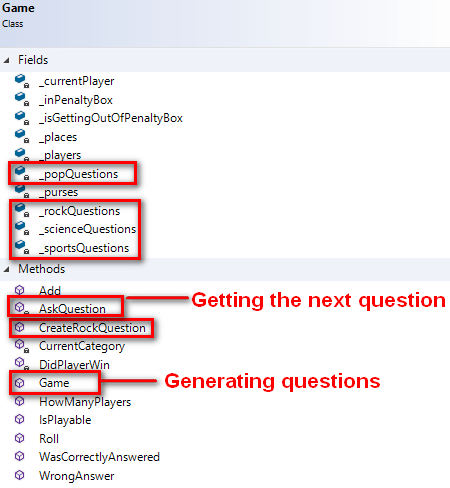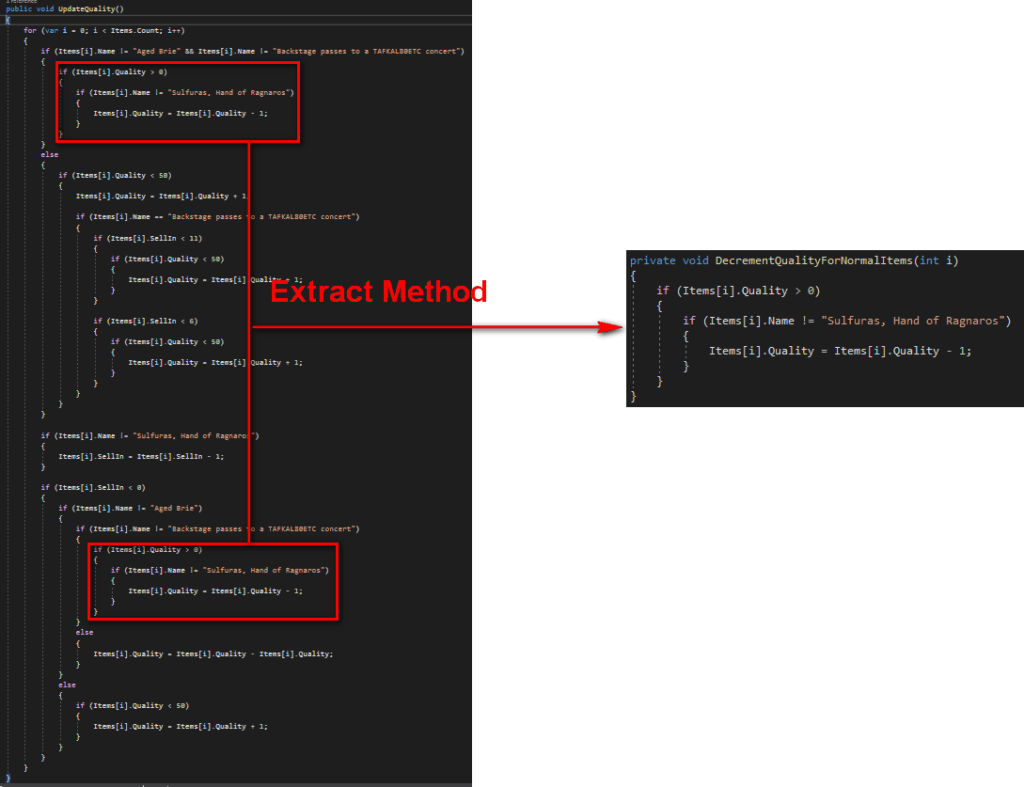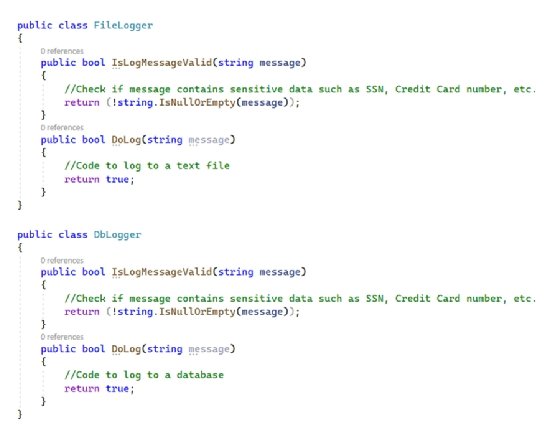Different Kind of Code Smells Explaination and Examples
It can become a huge problem especially if nobody cares about its removal. Usage of the term increased after it was featured in.

Refactoring The Large Class Code Smell
Like we have different smells we also have different code smells.

. You can easily fix this code smell by extracting the unrelated method to a new class like Product class or FileSystem class. According to a 2018 survey on code smell God Class is the code smell detected the most appearing in almost 55 of all projects. This means a User class shouldnt have a function related to products or file conversion.
Refactoring is meant to eliminate code smells. Some examples of code smell Duplicate Code. Determining what is and is not a code smell is subjective and varies by language developer and development methodology.
Dispensable Code Smells are generally unnecessary code that should be removed from the source. - Shotgun Surgery Code Smell It is the exact opposite of divergent change. The smells are signals that a code has become unclean.
As you uncover the code smells you also uncover the need for refactoring. A code smell is a surface indication that usually corresponds to a deeper problem in the system. These are broadly divided into 2 main categories.
Below describes some of the most common code smells that when caught early should not be too. But first of all one should find them in the system. There are some tools that help to determine code smells but it isnt wise to fully rely on any tool in this case.
Such situations could cause hidden bugs to exist in the code. In computer programming a code smell is any characteristic in the source code of a program that possibly indicates a deeper problem. Code smells occur in the source code of an application and can indicate deeper problems that are not apparent at first glance.
Bloaters are pieces of code - like methods or classes - that have grown into such huge proportions that they have become a nightmare to work with. Other kinds of code smells could exists especially in your JUnit code. The best way to locate code smells is to use experience and intuition of the programmers.
Identifying and fixing these issues helps tremendously in securing and future-proofing the application and allows developers and testers to better understand maintain extend and test the code. As a somewhat colloquial term theres really no official definition for code smell. Could happen when a developer to meet.
Different types and forms of code smell. The list of the most common and the most repeating code smells are given below. These smells mean that if you need to change something in one place in your code you have to make many changes in other places too.
Program development becomes much more complicated and expensive as a result. 2 ViewModel it looks like MVVM pattern should not know about view style. Code Smells are signals that your code should be refactored in order to improve extendability readability and supportability.
There are many code smells out there in the void and this is not an extensive list by far but it provides good coverage of some of the most encountered code smells. It is like deodorant to the code. Test case without asserts.
Code can rot at all levels as shown below. The Formal Definition. Example code smells Duplicated code Long method Large class Long parameter list Message chain Switch statements Data class Speculave generality Temporary field Refused bequest 4.
Yes Comments are code smells too. God class is a class-type code smell that is formed when a class is doing too much work and impasses the single responsibility principle. The thing is that there are no distinct.
Long Method Large Class Primitive Obsession Long Parameter List Data Clumps. Object-Orientation Abusers All these smells are incomplete or incorrect application of object-oriented programming principles. For example Switch Statements Temporary Field Refused Bequest Alternative Classes with Different Interfaces.
In computer programming a code smell is any characteristic in the source code of a program that possibly indicates a deeper problem. They range in the form of. The most common code smells Bloaters are parts of code classes methods that have increased disproportionately and has become hard to work with and are doing too many things instead of having one clear responsibility.
When you see a bloater in the code youre reviewing your nose should start to twitch. In addition to class internal code there are often cross-class code smells such as large classes alternative classes which do the same but use different interfaces lazy classes message chains data clusters parallel inheritance hierarchies or subclasses that do not require inherited methods and data. So here I want to show you some of the main code smells and how to detect them.
Its better to move this logic into view model. The code has to be odourless. 1 Using if statement.
Make sure that having zero code smells is an integral part of your Definition Of Done. So were gonna start out with the basics - from Wikipedia. It seems for me that there are 5 code smells in this code.
The second most detected code smell is Feature Envy Class or Method. 3 There are bad names for text fields. Although there are more than a hundred of code smells.
A good working definition of a code smell is as follows. Types of Code Smells. Other Kinds Of Code Smells.
Code smell also known as a bad smell in computer programming code refers to any symptom in the source code of a program that possibly indicates a deeper problem. Code Smells Within Classes. The term was popularised by Kent Beck on WardsWiki in the late 1990s.
The code must shine. And with that as the foundation of the term I give several examples of what code smells look like and how we can identify them. This code smell will make you change many classes for one single reason.

Refactoring The Long Method Code Smell Makolyte

Understanding Code Smells And How Refactoring Can Help

Code Smells And 5 Things You Need To Know To Achieve Cleaner Code

No comments for "Different Kind of Code Smells Explaination and Examples"
Post a Comment